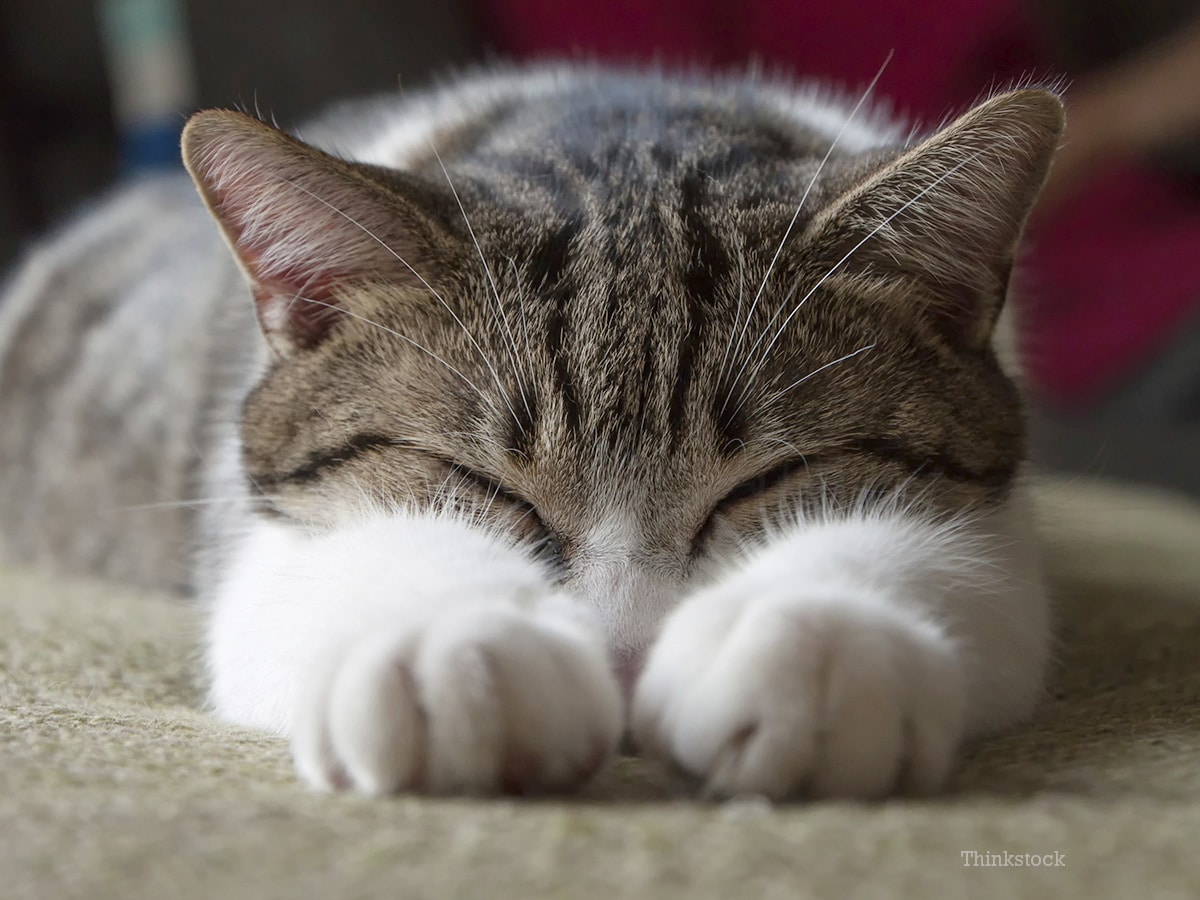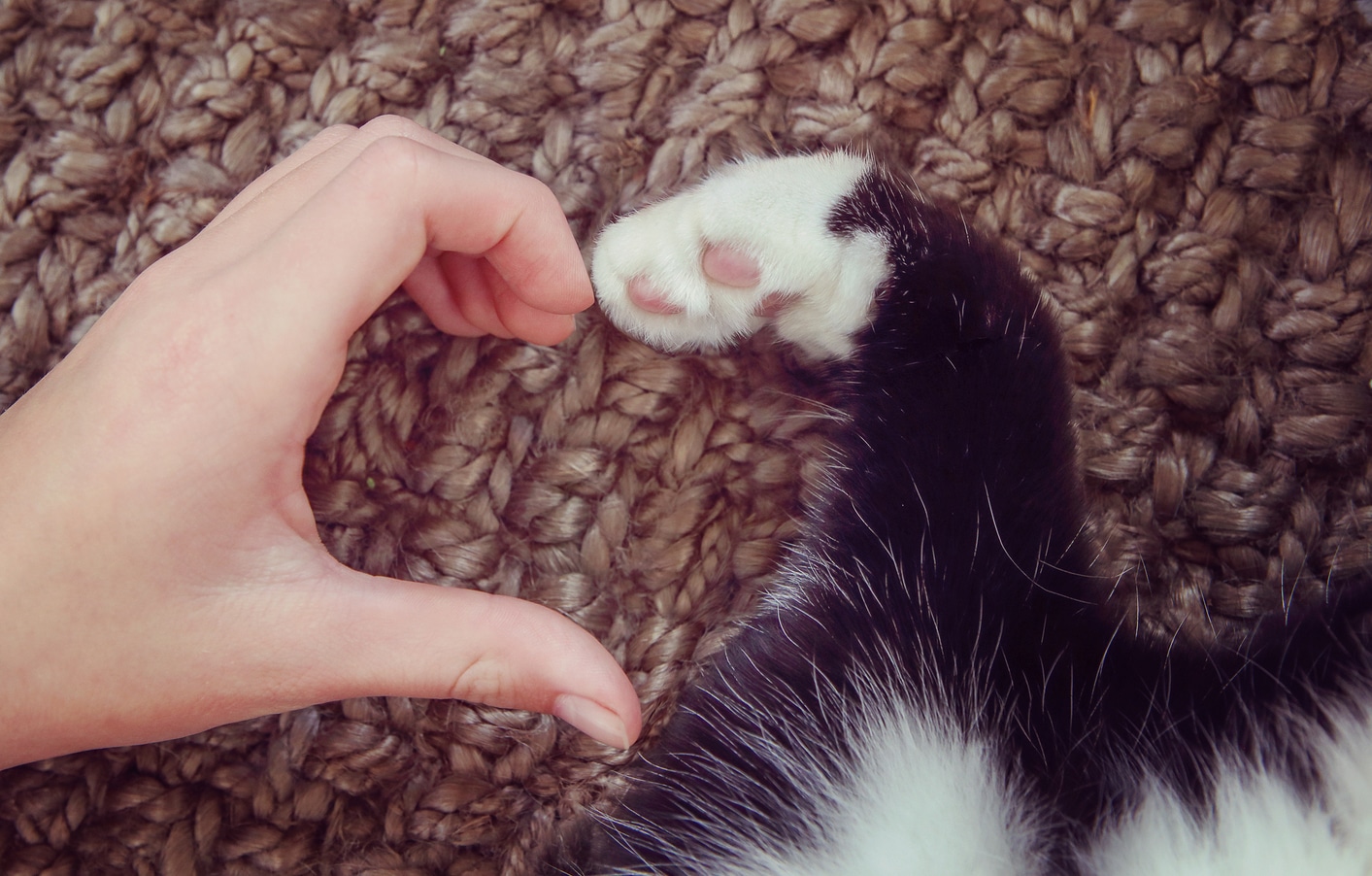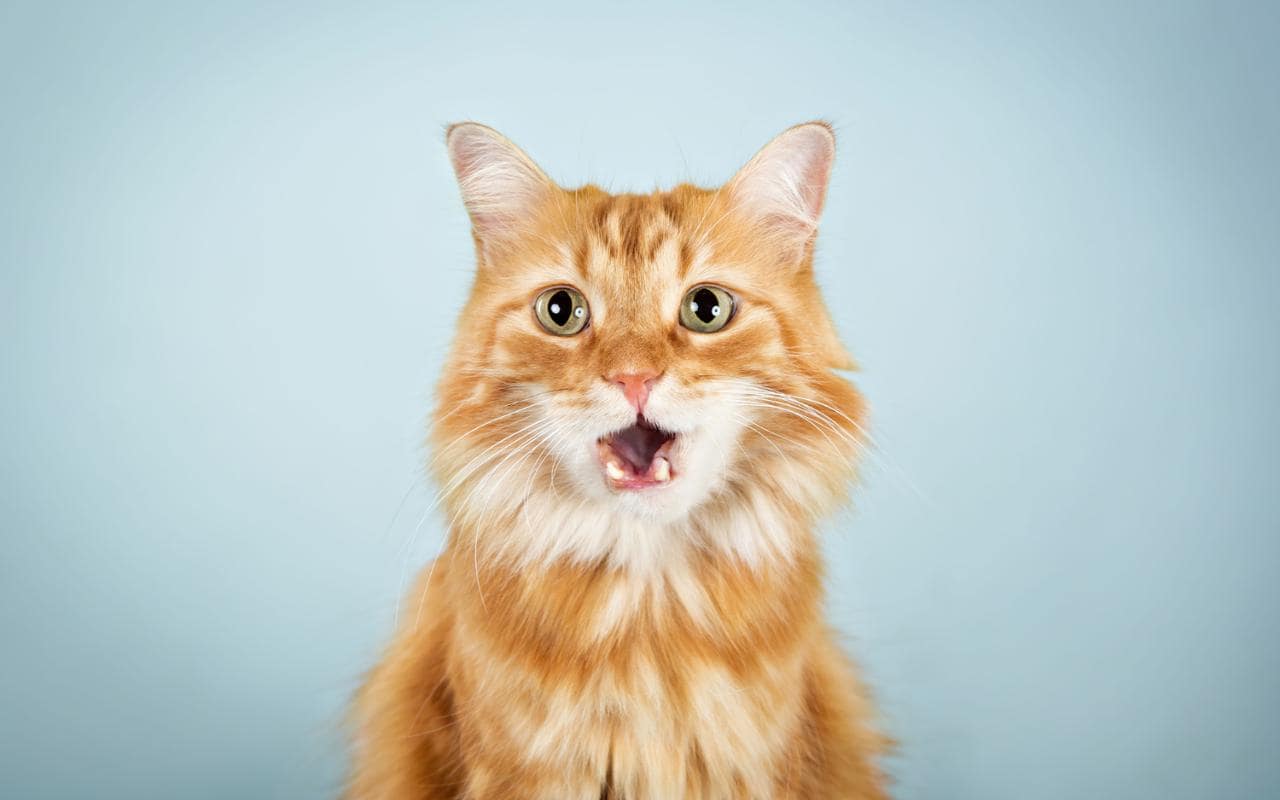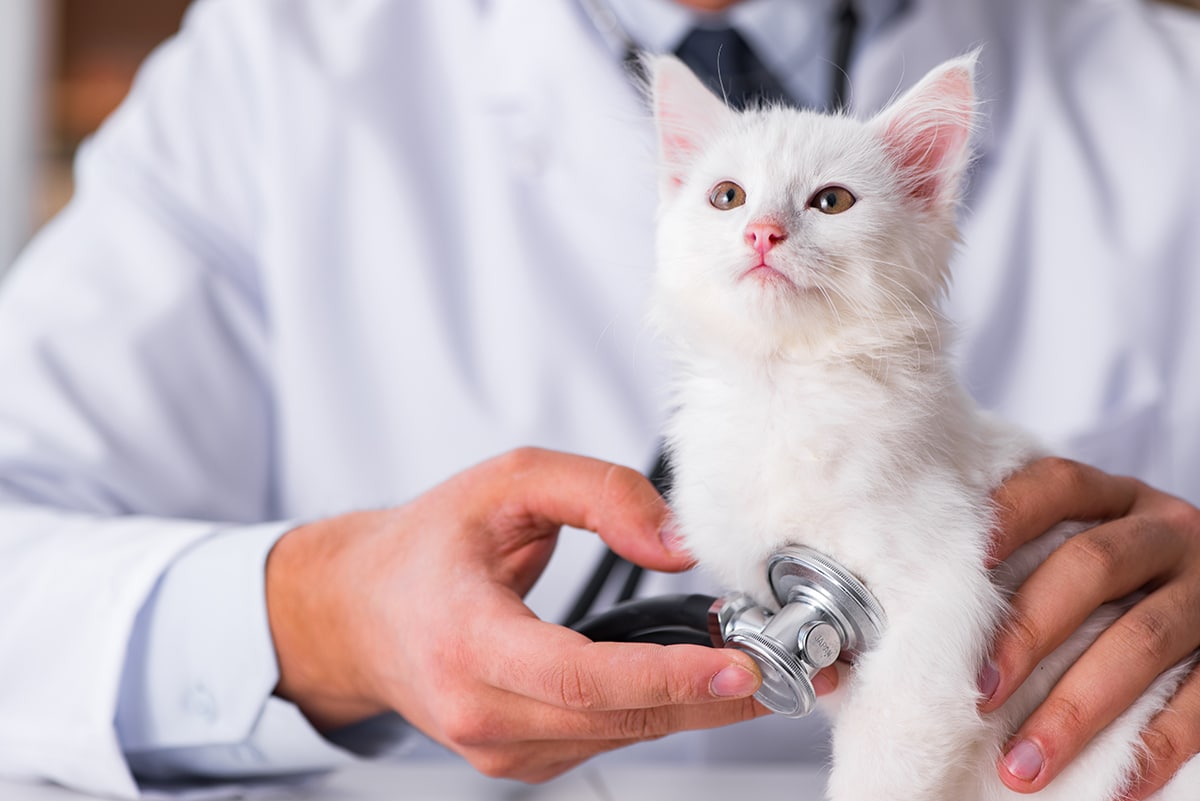
The cat is a furry one that, when you put your hand on its chest to feel its heartbeat, the first thing you notice is that it beats at a much faster rate than that of humans. So much so that it's no wonder you wonder if that's normal, or if something is really happening to him that you ignore.
This gesture is great to do from time to time, since it can be useful to detect if our four-legged friend has any disease. But of course, for that it is also important to find out how many beats per minute is normal for a cat. So this is what we are going to talk about next.
What is the normal heart rate in a cat?

Your cat's heartbeat will depend a lot on its age and size. The cat's normal heart rate is between 140 and 220 beats or beats per minute. In the case of cats, the heart rate is higher than in dogs. In dogs this ranges between 60 and 180 beats per minute.
Normally, when kittens are younger their metabolism is faster, therefore, their heart rate is higher. That is, your heart beats more times per minute. And as you grow your metabolism slows, and theoretically, your heart rate also decreases.
The beats per minute in a cat is not the only thing to consider

First of all, tell you that heheart rate is a fundamental physiological parameter when evaluating how healthy your cat is. However, it is not the only physiological parameter that must be taken into account.
Along with the heart rate that your cat has, you also have to take into account:
- Breathing frequency (FR): 20-42 breaths / min)
- Capillary refill time (TRC): <2 seconds
- Body temperature (Tª): 38-39,2 ºC
- Systolic blood pressure (PAS): 120-180 mm Hg
- Mean arterial pressure (PAM): 100-150 mm Hg
- Diastolic blood pressure (PAD): 60-100 mm Hg
- Urine production (URINARY OUTPUT): 1-2 ml / kg / h
How can I measure these parameters in my cat?
From the above parameters you can comfortably measure capillary refill time, respiratory rate and temperature at home if necessary.
El capillary refill time it is observed in the gums of our cat. When you press a finger on the gum, the area under pressure will turn white. What we have to observe is how long it takes for it to turn red again.
La Breathing frequency You can see it by looking at your cat's chest. Put it upright on all fours, or lying on its side. Once you have it in that position, look at the times it expires, that is, the times its chest swells. Since I know that it is difficult to keep a cat still for a minute in that position, I will explain another way. Take a stopwatch, the one included with your smartphone will help you, and count the times that your chest swells for 15 seconds. Multiply the number of breaths you take in that time by four and you have your cat's breaths per minute.
La temperature You can measure it if necessary with a thermometer with a flexible tip. It is recommended that you use a little petroleum jelly since the tip of the thermometer is inserted into her butt to take her body temperature. It is something that they do not usually like and that stresses them, therefore I do not recommend that you take his temperature unless your veterinarian considers it strictly necessary.
In the case of the heart rate what comes to mind is to put our hand on his thorax, on the left side between the third and fourth rib, looking for the heart. But really it is easier to measure the heart rate in the saphenous vein.
Where is the saphenous vein and how do I measure my cat's heartbeat?

The most comfortable position for measuring heart rate in the saphenous vein it is by putting our cat on its four legs, although we can also do it with the cat lying horizontally on one of its sides.
Once you have your cat in one of these positions go to one of the hind legs, to his thigh. Put your hand with your thumb on the outer thigh and the other four fingers on the inner thigh. You will perfectly feel the pulse. As with the respiratory rate it takes a time of 15 seconds and the number of beats that it gives you multiply by four.
Why can my cat have an abnormal heart rate?

A cat's heartbeat can be affected by a number of factors. However, this does not always mean that our little one has heart problems. Here is a list of the most frequent situations in which our cat may have an abnormal heart rate:
- If you are in a situation of stress.
- If you are playing.
- You have fever.
- You have obesity
- Problems of hyperthyroidism
- If you have diabetes
- If you have any heart or blood circulation problems.
- If you are dehydrated.
- If you have pain.
- If you suffer poisoning or poisoning.
When to go to the vet?

Sometimes it is not easy at all to know if the cat has a heart condition or not, since the feline is an expert when it comes to hiding pain. Now, as I mentioned in the previous section, the heart rate is not the only thing we have to take into account.
Go to your trusted veterinary center if you notice that your cat is lethargic, listless, moody, does not eat or eats less than before, or eats convulsively.. Even if you drink water excessively or don't drink at all. The reason is that when cats are not well one of the first causes that many have is that they are more moody, they snort more. It may even scratch you when you try to touch or hold it, when it did not before. Another reason for consultation may be when they do not evacuate in their sandbox and do so in other parts of the house, many people think that the animal does it to annoy, but far from being that, it is rather an indication that something is not right on your cat.
Also if you notice that your cat loses the coordination of the legs when walking, that salivates excessively, that vomits foam or has diarrhea, go urgently to your veterinarian. It may be a case of intoxication or poisoning and there is no time to waste. And it goes without saying that if it is a kitten with less than a year, everything becomes more urgent because they are more vulnerable to whatever happens to them.
I hope this post has been useful to you. And remember not to let time pass. Your life could be in danger.
Hello Angelica.
You should take him to the vet as soon as possible. Only he can tell you exactly what disease he has, and how to treat it.
Cheer up.